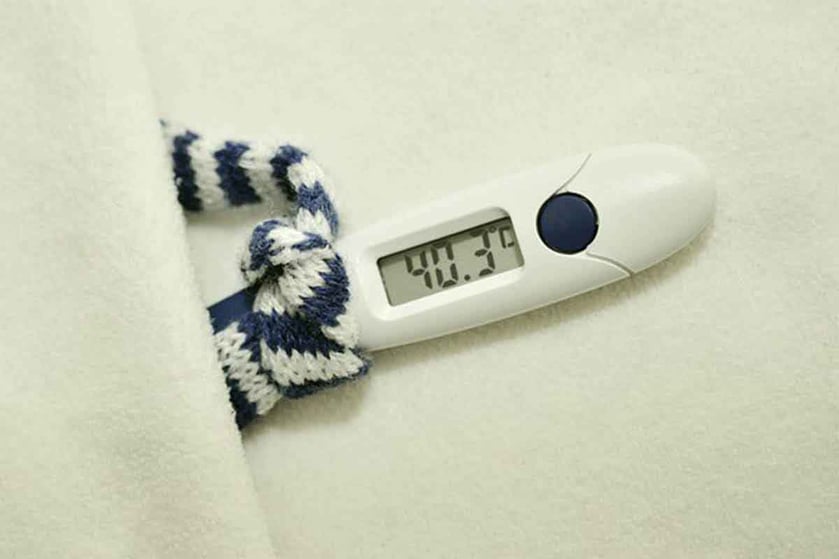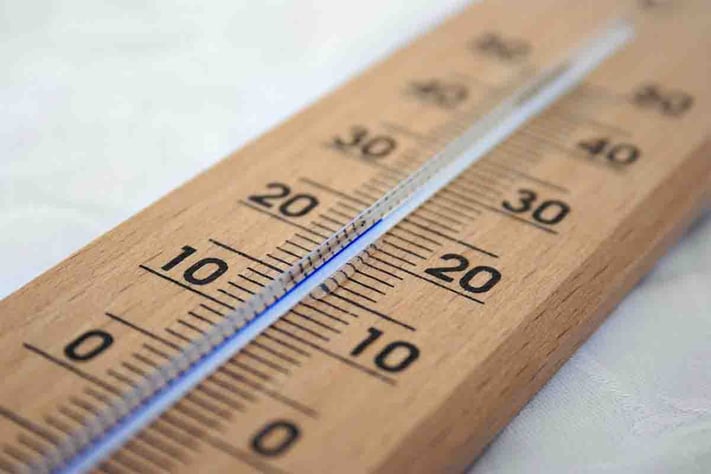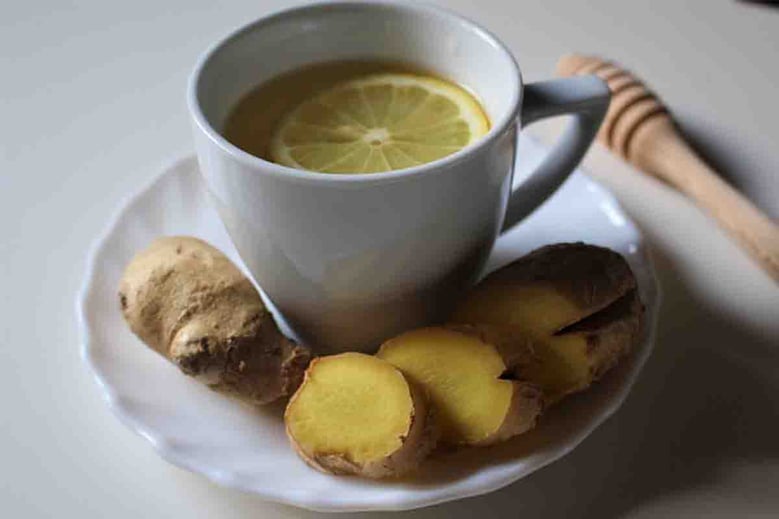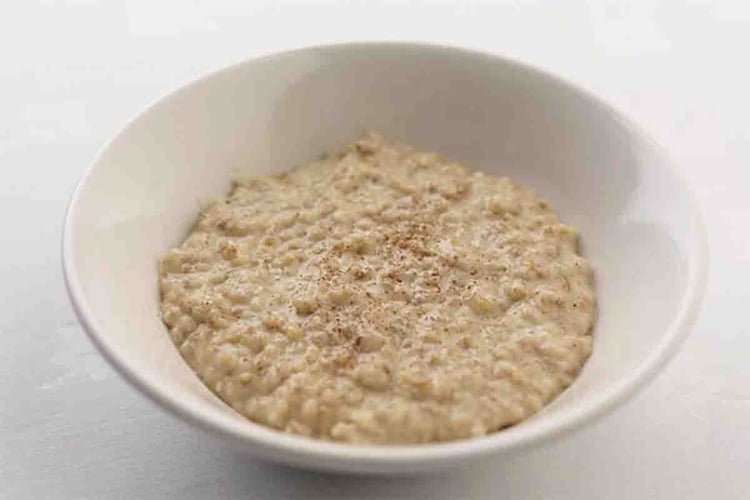
Do you know what goes up and down without having to move? Something we have but rarely notice?
In the hustle and bustle of our everyday lives, we are more often than not, simply attentive to details that we consider important or see as a priority. As the riddle implies, monitoring our body temperature is not always top-of-mind when it comes to improving our physical health, nor is it a daily element we think of.
The only time we ever pay attention to our body temperature is when we feel our body shiver from an oncoming fever.
Unbeknownst to many, our temperature is one of the most vital metrics for measuring our body’s quality and well-being. You might now somehow be recalling that taking your body temperature is a standard procedure in any appointment with your doctor. In order to learn what efforts we can do to support our bodies, it’s best to understand what contributes to our body temperature and how this makes it significant.
What is body temperature all about
Body temperature is the assessment of how your body generates and loses heat. When it rises, the blood vessels in your skin expand to dispel the excess heat to its surface—which is if you sweat and it evaporates, your body cools down. Conversely, when the temperature drops, our blood vessels tighten; scaling down the blood flow to your skin to save heat—this is why we shiver. It’s an instinctual response from your muscles meant to help your system develop more heat and rewarm the blood.
Your body temperature also reveals things about your health. Here are some of them:
- How fast your metabolism is
When people decide to lose weight and go through extreme dieting, their temperature levels decrease to meet their body’s new metabolic rate. As their body tries to conserve energy, people may feel cold more often.
Keeping track of your body temperature while dieting may tell you how your metabolism is responding to your new meals. If your temperature were to suddenly drop, it would be best to try a different routine.
- How your metabolic health is improving
A telling symptom of good metabolic health is when you have a more consistent body temperature day by day. This helps you get better sleep at night and keep your blood sugar levels in check.
- How your circadian rhythm operates
Your body’s circadian rhythm is when your body synchronizes itself to real-world time. Measuring your body temperature reveals your body’s internal clock. Your minimum body temperature is when you feel the most sleepy and your maximum body temperature is when you feel the most awake.
Of course, if you find yourself feeling sleepy at moments where you need to be alert and awake, there are natural ways to change your circadian rhythm.
- How stressed you feel
Studies reveal that both humans and rodents experience a temperature spike when under acute stress. Nervousness over an exam, a confrontation, or a roller coaster ride is normal and you may find yourself sweating buckets before the event. However, it is good to know if your body is sending out warning signals for a health problem instead.
How do we measure body temperature

There are many types of thermometers for different parts of your body. For children and infants, parents and paediatricians commonly use ear and pacifier thermometers. For adults, digital and glass and mercury thermometers are used.
The common body parts doctors use to take your body temperature include your forehead, ear, armpit, mouth, and rectum. Its measurement can either be in degrees degrees Celsius (°C) or Fahrenheit (°F), in most other countries the standard is using Celsius while in the United States it is Fahrenheit.
Why is body temperature more important now than ever: A discussion on normal body temperature causes and effects
Now that we’ve covered some basics on what body temperature is and how it’s measured, let’s go back to briefly to the year 1851. In that momentous year, German physicist, Dr. Carl Wunderlich gathered more than a million core temperatures of 25,000 patients. His study established that 37°C or 98.6°F was the average normal human body temperature.
Research from Oxford press, however, cites that modern inquiries on the matter have consistently shown recorded findings of a lower temperature range. Researchers also conducted an investigation of their own where they compared the recorded body temperatures of 30-year-old white men in three main time period categories: 1860–1940, 1971–1975, 2007–2017.
According to the study, the average body temperature of humans has changed over time, with consideration from the period of their birth and or existence, and that this has been decreasing by 0.22 degrees Celsius or 0.4 degrees Fahrenheit since the 19th century.
Notably, the study reports that the cause of the difference may be due to the physiological changes experienced by the human body from those periods. This means that modern people's body temperature is lower than ever before and can possibly be modified by certain factors that may not have been accounted for.
To mention a few common causes of low-temperature body state is created by work stress, hypertension, fatigue, depression, environmental body toxicity, inappropriate diet, diabetes, gout, improper sleep routine, Lyme disease, excessive blood pH, hypoglycemia, excess weight, and lack of exercise. All of which are thriving and happening in our world today.
Several academics dove into understanding the human body temperature better. Recent medical studies have well-advanced what Wunderlich has established and are presently educating people that the human body temperature is more flexible than believed to be.
One of these people is Jonathan Haussman, a rheumatologist at Boston Children’s Hospital and Beth Israel Deaconess Medical Center in Boston. In 2018, Haussman conducted a study alongside his colleagues using the iPhone app, Feverprints. The study, published in the Journal of General Internal Medicine, also counters the 1868-year-old 98.6°F benchmark. With a sample of 329 healthy adults and the use of an oral thermometer, it dictates that the average normal temperature in adults is 97.7°F and 99.5°F begins as fever.
Of course, this range diversifies among different age groups. As babies and children are at a stage where physical development is at its peak, their average temperature is about 97.9°F to 100.4°F. For the elderly, their average temperature is seen to be lower than 98.6°F.
When considering gender, studies suggest that women evolved with a system that protects their core body temperature when exposed to freezing weather. Blood flow is reduced to the skin and extremities to keep internal organs warm and secure. So though their hand temperature is lower than men’s, their internal temperature is slightly higher. For men, they are more likely to generate more heat as they tend to have a greater muscle mass.
Hausmann imparts that like the way we evaluate body weight or blood pressure, body temperature should be a flexible concept with dependencies and or perceptions considering age, gender, time of day, and many more.
Safe to say, overall studies in modern times are debunking the standard Wunderlich set out, but there is still truth there. According to Professor Ariaki Kawashima of Tokyo Ariake Medical University and a doctor at the Toyo Medical Research Institute tells us that the optimal human body temperature is still at 37°C or 98.6°F, but today’s people are not reaching the ideal and are instead faring about one degree less.
Some may not think much of that one degree but in effect, the body’s metabolic capacity is lessened by about 12-120% and its immune function is lowered down by at least 30%. When body temperature starts to drop, the concentration of blood increases and its circulation deteriorates. If the blood’s circulation is not at its prime, oxygen and nutrients are not transmitted well to various parts of the body. This can result in the holding off production of hormones and neurotransmitters. In addition, the human body becomes more susceptible to viral infections which replicate more actively in cooler core temperatures such as the Rhinovirus—the source of the common cold.
That said, take Japan as an example, given the different seasons they experience and their country has always been on the cold side, they have developed a sense of “warm living”. This is a series of efforts or activities to retain the body at its optimal temperature.
Warm living can be through their modern devices or leisure endeavours. In a way, it has somehow already been embedded in their culture, as simple as their use of a kotatsu which is a possible counterpart of the electric blanket or by going to an onsen, a hot spring.
Being concerned about your body temperature is important when ensuring that your body is able to function well. At its optimum heat, your body’s performance is at its best and fittest. This naturally calls for measures to take better care of your health.
What causes high body temperature aside from sickness?
Many of our lifestyle choices or environmental factors can make our temperature rise. Here are a few examples:
- Hot or humid weather: Undesirable weather conditions can leave you feeling tired, distracted and even irritable. When prolonged, you are more likely to get a sunburn, heat exhaustion or heatstroke.
- Exercising or any strenuous activity: If you are not used to exercising regularly, exercise in humid environments or exercise too much, you are more likely to increase internal heat.
- Food and drinks: Alcohol, caffeine, spicy food, and warm soups can make you sweat more than usual.
- Clothes: Any kind of material that is thick, tight, restrictive or dark can increase your body heat. There are also different fabrics that prevent your sweat from evaporating, causing you to sweat more.
- Medications: Certain kinds of medicine can cause us to sweat. Analgesics, cardiovascular drugs, hormonal drugs, and skin treatments may cause your body to heat up.
How to increase your body temperature

Medicinal research has indicated that by routinely expanding the core temperature of the human body by 1.8°F, the human immune system is improved up to 30%. To help maintain the ideal temperature of your body here are a couple of ways how:
- Exercise
It’s not just all about losing the extra weight. Being physically active, it will definitely make you sweat and breathe heavily. It will also increase your heart rate and pump up the circulation of blood and oxygen in your body.
Through these essential physiological processes, it preserves your body’s state of homeostasis. It also helps boost your body temperature, blood oxygen levels, sugar levels and hydration—vital properties for your survival. Plus when you’re coursing through a good workout routine, your body adapts a mechanism that sustains your ideal body temperature and water levels so you can keep exercising. Along with a steady healthy diet and a good intake of fluids, stay active to aid your body to maintain its best performance.
- Eat Right
As drinks like alcohol and caffeine may not always be the healthiest option to keep yourself warm, there are healthier alternatives that you can consume. Thermogenesis is the process where your body produces heat as it digests and metabolizes your food. Here are a few:

Bananas
Packed with Vitamin B and Magnesium, this naturally sweet fruit helps your thyroid and your adrenal glands function properly. These glands are the ones responsible for regulating your body temperature.

Sweet Potatoes
Starchy vegetables like sweet potatoes and other root vegetables require more energy when moving through your digestive tracts. Therefore, your body temperature rises. Not only that, this vegetable is full of Vitamin A, Vitamin C, Potassium and fiber.
 Butternut Squash
Butternut Squash
Turning this vegetable into a soup is a nutritious way to warm your body up. Filled with different antioxidants, vitamins, minerals and nutrients, your immune system will also remain healthy.

Ginger Tea
Ginger can stimulate digestive health and thermogenesis. Making ginger tea is also a healthy antioxidant for your body, washing out harmful toxins from your body.

Oats
Making porridge for breakfast fills your stomach with whole grains and fiber. Apart from fighting away unhealthy cholesterol, you will also feel full and warm.
Consider Heat Therapy
Also known as Thermotherapy, this method is mainly utilizing heat as a treatment to relieve pain or for health and wellness. It has been proven as an effective self-care remedy for many ailments and a great way to alleviate pain and inflammation, muscle spasms and decrease joint stiffness.
Thermotherapy uses tools such as hot cloths, hot water bottles, heating pads, ultrasound and many more. Using these help increase your blood flow while carrying essential protein and oxygen which then boosts your body temperature as well.
A Warm Bed
In the winter or probably even just on a cold day, you’d like to have your bed warm and toasty. Piling up your bed with comfortable sheets, blankets, and pillows would be one way to go. For greatest impact, get thicker sheets made of wool, as the material is delicate and extremely warm. You can likewise get sheets made of downy or silk.
As a plus, you can surround yourself with more pillows, use an electric snuggly heating cushion to warm your hands. Put on your electric foot warmer as it is a great way to keep your feet warm. Contingent upon the size of your bed, you'll need between two to four extra pillows. Those additional layers will provide good insulation for your bed, warming its temperature significantly. You can also try putting on additional clothing. These should be not too restrictive, but can keep you warm nonetheless.
Moreover, a decent sleeping mattress for managing internal heat level is one made of polyurethane foam, since it changes with your body temperature and keeps you warm in the winter. Purchasing a decent sleeping bed is a beneficial venture, so don't purchase the modest ones. You'll eventually wind up replacing them at some point or another.
Going to the spa to soak in a hot tub or immerse in a sauna or steam is soothing. Likewise can be said after taking a long hot bath or shower. These activities can be truly unwinding and healthy for the body. With the hot water, it relieves almost if not all your anxiety, stress, and muscle pain. The water’s temperature and movement raise functions and your body’s overall circulation processes, relaxing it as it increases its temperature while freeing your body from the impacts of gravity.
An Electric Underblanket
Another option is to keep things simple and take advantage of today's technological innovations for warmth. With an electric underblanket you can help regulate your body temperature at will. This is especially when you’re about to rest since we people in general experience our greatest internal heat level drop the minute we fall asleep making us more susceptible to viruses. Warmth has now become a tool you can simply switch on when needed or wanted.
When purchasing an electric underblanket, you’d want to look for qualities that can provide the best levels of warmth, comfort, and breathability. Our 4D DWF electric underblanket can give you that ultimate experience.
4D Dynamic Warmth Flow is designed to give the best degrees of solace to the sleeper, while as yet keeping the fundamental components of what makes a decent electric blanket. What makes it unique is its ability to create a warm soothing environment for you with its even distribution of heat while still allowing for efficient airflow.
Whether it be through physical fitness, recreational activities or innovational tools—the overarching benefit of regularly increasing your core body temperature is to protect your body’s immune system and bring it back from the 30% decline caused by that one degree less.
Every physiological process in your body large or small are reliant on catalysts. Having a healthy and optimum body temperature, the more successful you are at converting energy. With that energy, your body develops a strong immune system. Gaining that kind of immunity, you become more capable of assembling and rebuilding cells faster. Then the more evident upgrades in mental mindfulness become—in addition to proper nutrient, mineral, and calorie consumption.
As you can see, understanding your body temperature and how to improve it is important. It plays such a vital role in your body’s functions and behaviour. It is best to always keep it in check and continuously find ways to attain its ideal state.
4D DWF technology disperses the heat generated by our blankets through uniquely designed holes, allowing them to give you ideal conditions for sufficient and comfortable sleep.
Interested in becoming a distributor of Wellcare's 4D DWF products? Click on the link below to learn more about the 4D DWF electric blanket - what sets it apart from conventional electric blankets, and the science that comes with creating the next step to sleeping in comfort.
Data sources:
https://www.sleepassociation.org/about-sleep/top-10-foods-help-sleep/
https://www.sleepfoundation.org/nutrition/food-and-drink-promote-good-nights-sleep
https://www.healthline.com/health/why-am-i-always-hot#common-causes
https://www.healthline.com/health/how-to-increase-body-temperature


.png?width=512&name=united-kingdom%20(1).png)


